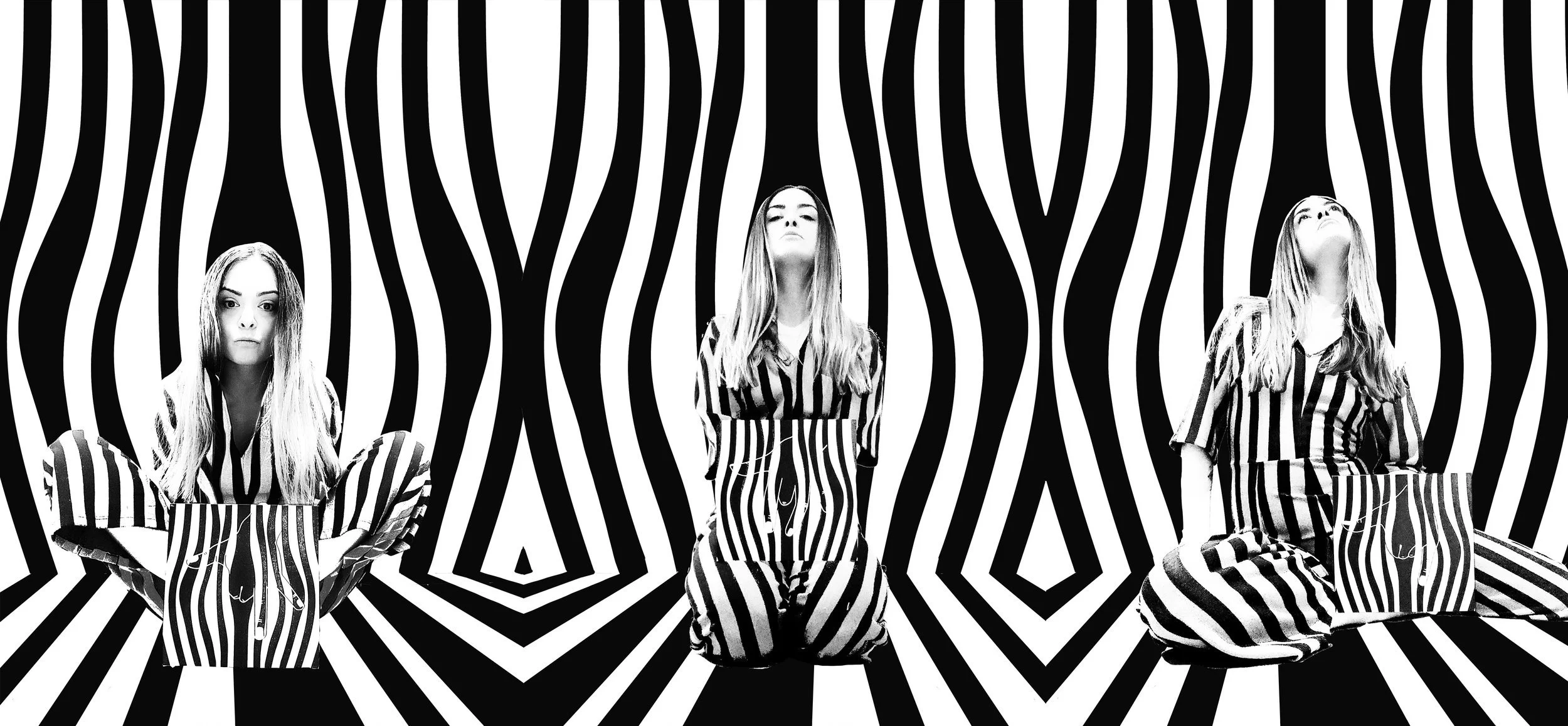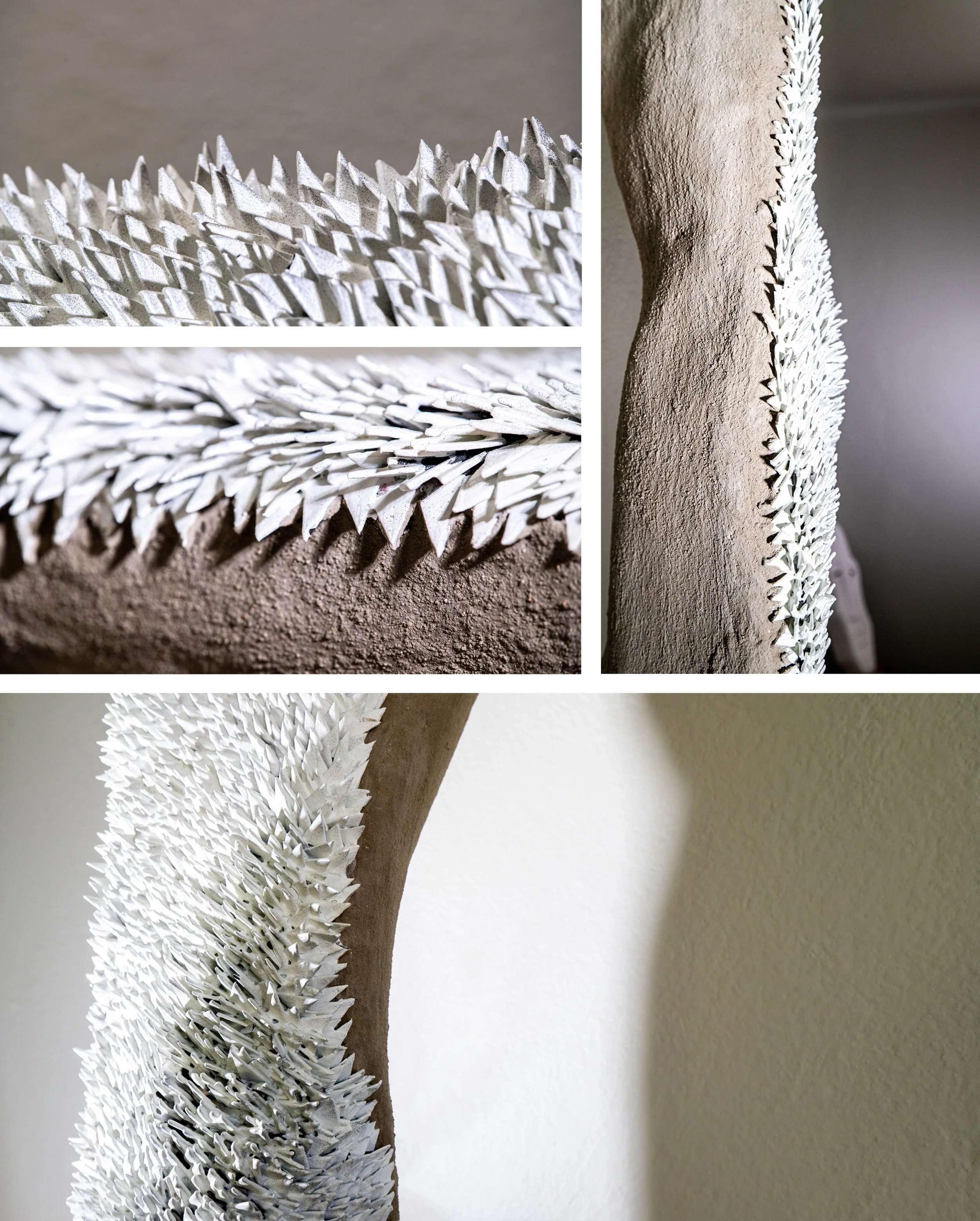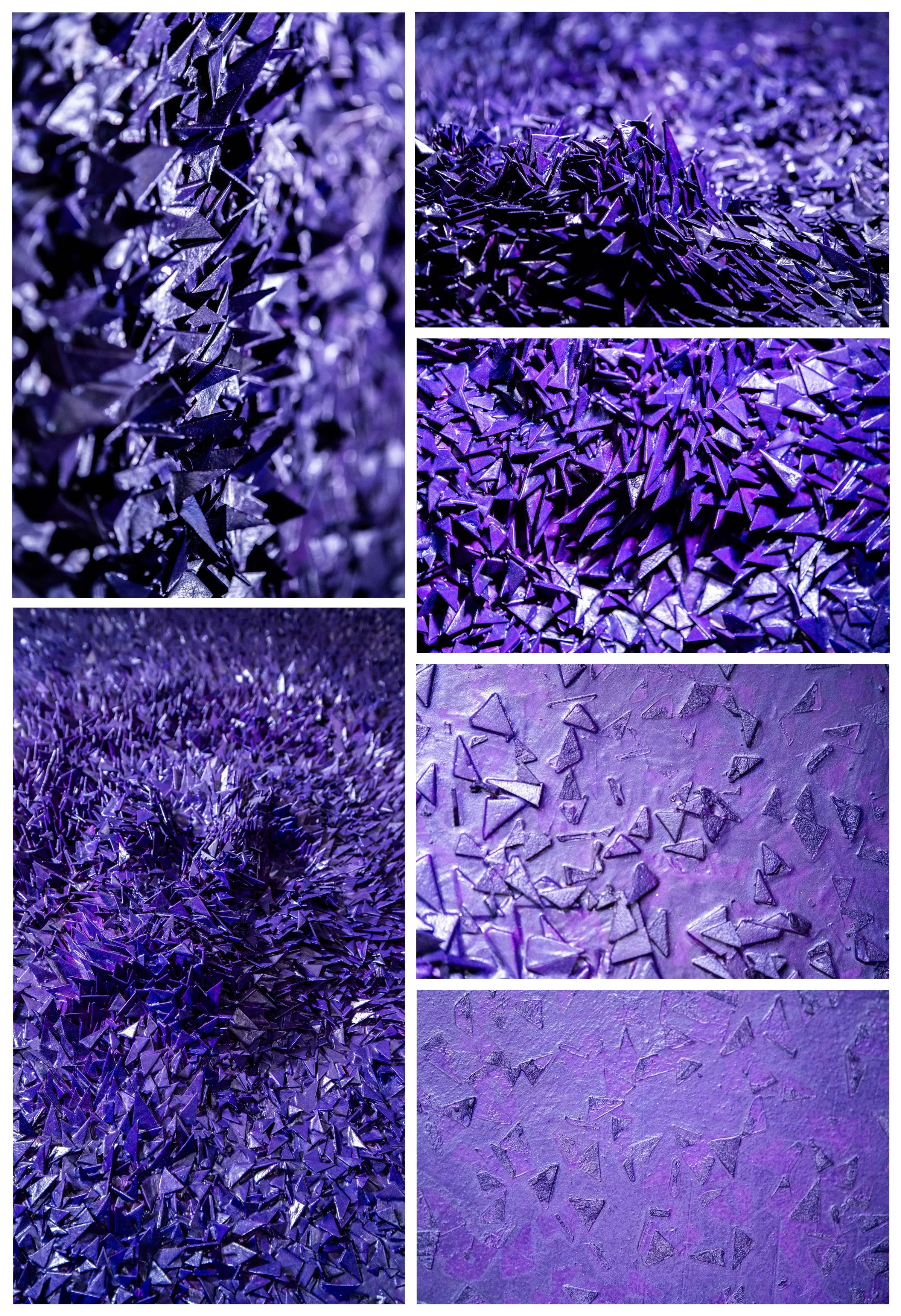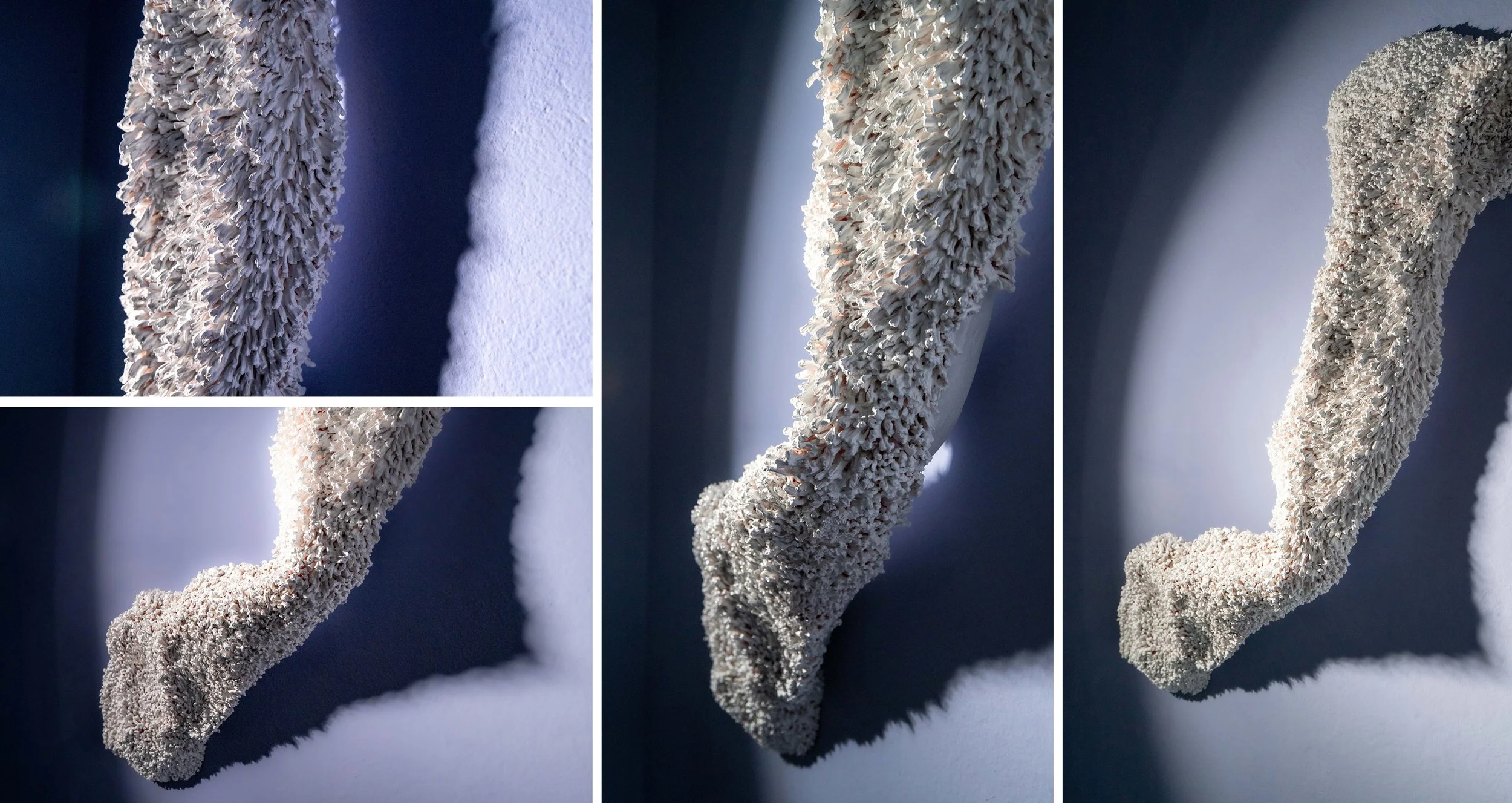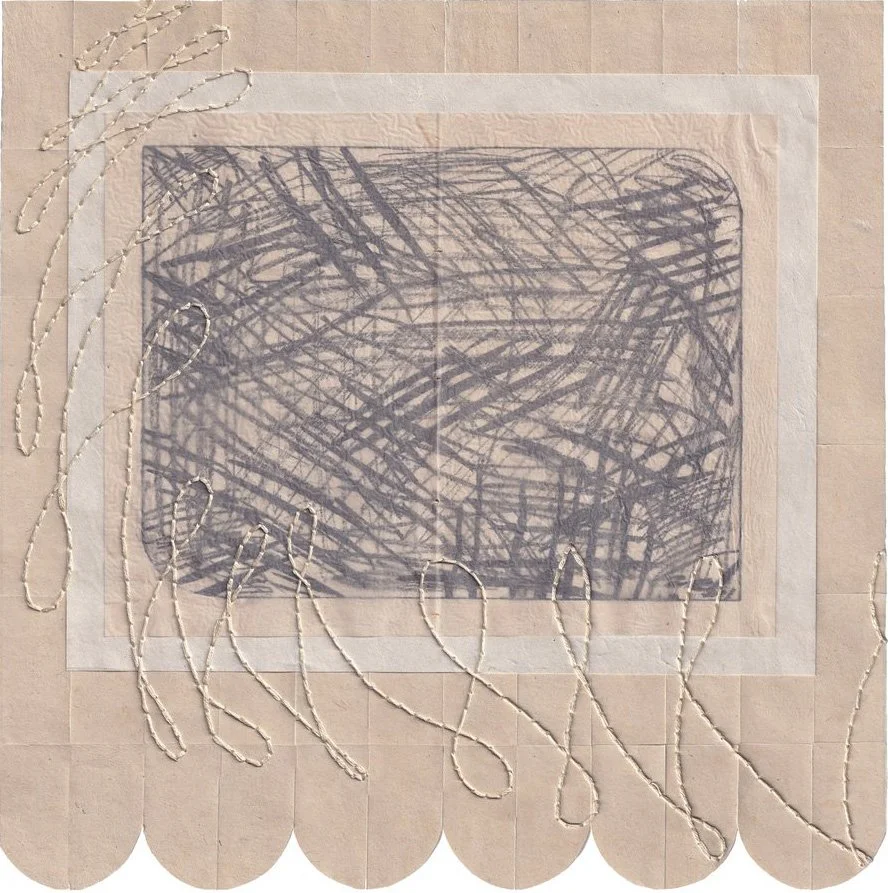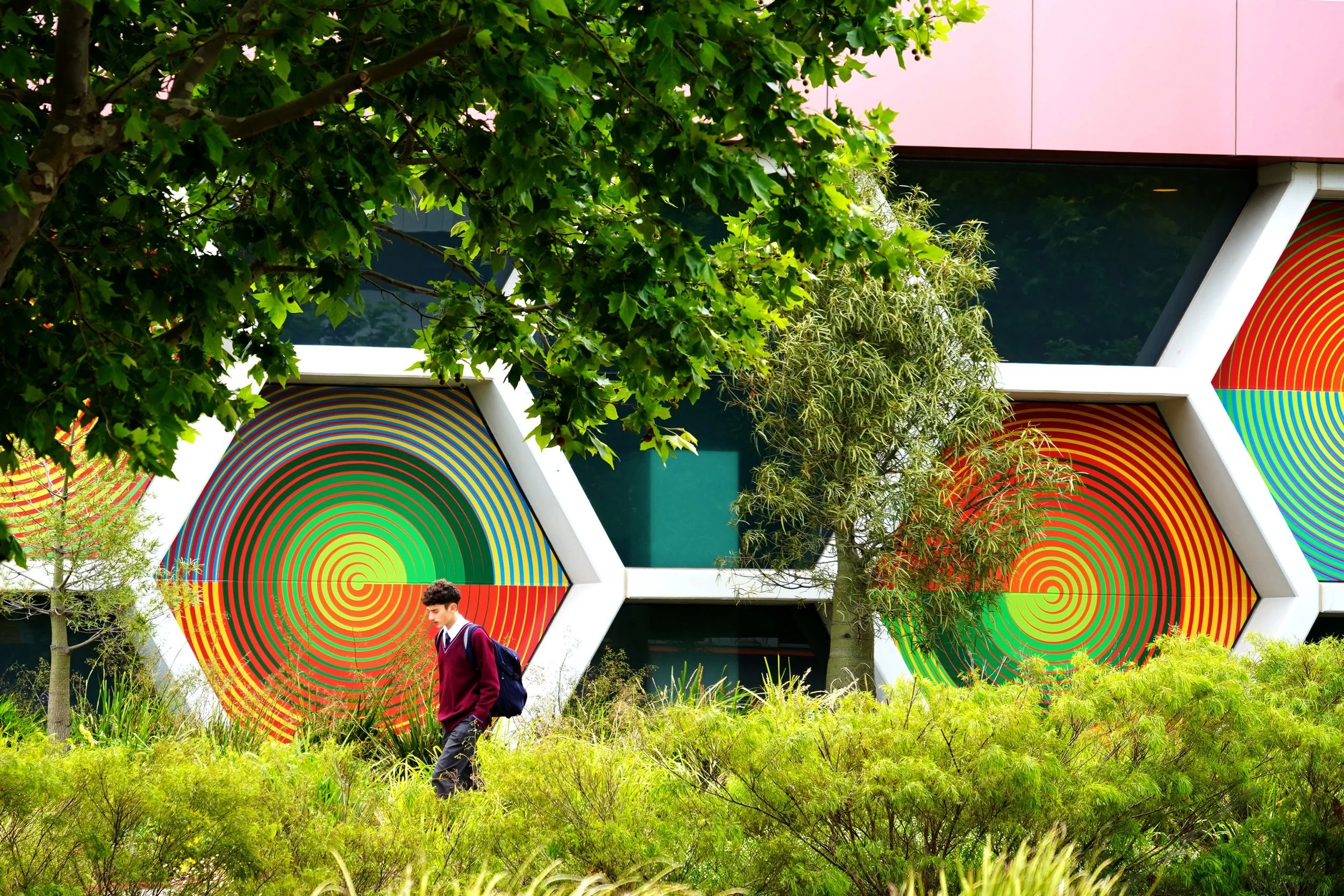INTERVIEW | Andrea Kurtz
10 Questions with Andrea Kurtz
Andrea Kurtz is an illustrator and artist based in Graz. Following her Bachelor's Degree in Architecture, she started her Master's studies at HSLU Lucerne (CH) in Design & Illustration. She operates as a freelance artist and illustrator. To date, she has held solo and group exhibitions in Austria, Italy, and Switzerland (Lucerne). Her illustrations and artworks have been featured in catalogues and magazines, showcased in exhibitions and festivals, and can be appreciated in public spaces as murals or installations.
www.kurtz-art.at I @kurtz.art
www.andreakurtz.com I @kurtzlii
Andrea Kurtz - Portrait | Photocredit: @fabsabmedia
ARTIST STATEMENT
Austria-based interdisciplinary artist Andrea Kurtz delves into her own emotions and those of individuals, encapsulating feelings, fears, desires, and, above all, (un)happiness. She expresses these sentiments through structural forms, capturing the emotional spectrum and rendering intense states, such as excitement, reluctance, anger, and devotion, with color, shape, direction, and structure to make them tangible. Currently, she is experimenting with a diverse array of materials to create different structures.
Haptics play an important role in the aesthetic experience, offering a tactile connection to the art. By employing relief-like forms, she leverages the viewer's tactile perception, introducing additional depth and inviting a shift in perspective. Over time, her artworks have evolved beyond the confines of canvas, adopting sculptural forms. Lately, she has been incorporating a component of sound for an auditory and more immersive experience—giving sound to emotion. Her art is not merely aesthetic; it serves as a personal journey of self-exploration and reflection. She aims to prompt viewers to rediscover themselves and engage with their own emotions. Her artistic vision seeks to transport observers into a multidimensional realm where emotions are not merely observed but also experienced (haptic or auditory). Through these components, she establishes a connection between the observer and the artwork, inviting them to be active participants rather than mere spectators.
EXCITEMENT, 160x50cm, mixed media © Andrea Kurtz | Photocredit: @fabsabmedia
EXCITEMENT, detail © Andrea Kurtz | Photocredit: @fabsabmedia
INTERVIEW
You are a visual artist and illustrator. How did you start getting interested in art? And what keeps you motivated?
Growing up, my dream was to be an architect, drawing plans alongside my father before I started school. During my architecture studies however, I realized I craved a more expressive outlet - drawing plans turned into painting buildings and landscapes. Closer to my 30s I decided to take a leap and pursue my creative passion seriously.
What keeps me motivated is this inexplicable urge to create. My mind never stops working, and simple everyday things can spark imaginative stories. It's a constant dialogue between the external world and my internal creative realm. Also witnessing the joy my artwork brings to people, the smiles it puts on their faces, is incredibly fulfilling. It's this connection with people's emotions and memories that fuels my motivation to keep expressing myself through my art. Moreover, the evolving art scene and the works of fellow artists continuously motivate me to push boundaries and explore new techniques. Learning from others and seeing different perspectives enriches my own artistic journey. There's a vibrant energy in the artistic community that fuels my desire to experiment and grow as an artist.
Ultimately, art is my sanctuary—a place where I can navigate the complexities of existence and translate them into visual stories. It's a lifelong journey of self-discovery and connection, and this ongoing exploration is what truly keeps my passion alive.
LORLIDNESS, 160x100cm, mixed media © Andrea Kurtz | Photocredit: @fabsabmedia
You separate, also on social media, your two fields of artistic expression, illustration and art, why/how is that?
Even though I also create analogue illustrations, my illustrative artwork tends to be more graphic and detailed, primarily executed digitally. In contrast, my artistic pieces lean towards abstraction. Over the past few years, they have evolved significantly, taking on a more sculptural quality.
I often mention that, with my illustrations, I tend to depict external, visible situations (external states), whereas my art focuses on the internal states. Besides that, I am professionally involved in the field of illustration and graphic design. Even though I express myself creatively and artistically through illustration, my work in this field is predominantly project-based—using illustration as a solution to a specific task, such as in editorial assignments.
graphic Project #doityourself (#FEMALEPLEASUREMATTERS) © Andrea Kurtz
You have worked internationally. What is your favorite experience as an artist so far?
Well, it's always a pleasure to collaborate with artists from different countries and explore the art scene in new places; I find that very inspiring. It's exhilarating to present my own work to diverse audiences and experience their perspectives on my art. Each of these international experiences has been unique.
In 2018, one of my illustrations was selected to be featured among the 50 published in the Tapirulan competition catalog. Additionally, all the featured participants took part in a group exhibition alongside Guillermo Mordillo, the legendary Argentine cartoonist who worked at Paramount Pictures Studios in New York. It was inspiring to meet illustrators from all over the World. I am thrilled that my artwork, "Lost Soul," will be showcased at the Venice Art Fair in February, and I eagerly anticipate upcoming projects in Trieste.
Let's talk about your work - Can you tell us about the process of creating your work? What aspect of your work do you pay particular attention to?
I think there are different ways of starting a work, it depends on the project. I could describe for my present project „shaping emotions“. The creative process begins with a simple dot, a stroke, or a line. This initial gesture can be gentle, passionate, angry, or explosive, setting a direction. It is the first attempt to express a specific emotion or state. Once the direction is determined, the question of structure arises, marking the beginning of a journey in search of suitable materials and colors. Initially, all of this happened on the canvas, but over time, I started to see the direction in a three-dimensional way, asking myself different questions when describing the feeling. For example, whether it leaves an imprint, whether the energy remains steady or rises to exciting heights, or whether it separates from the canvas and pushes outward. Consequently, I began to give my works a form as well. The newer pieces increasingly extend beyond the canvas and take on sculptural shapes. On the other hand it is known that Forms have a significant impact on our emotions. There are many essential parameters involved in my creative process. The artworks I am currently creating demand meticulous planning, involving the identification of suitable materials, processing these materials, contemplating how to apply them to the form, and determining methods to connect the materials seamlessly. I have to pre-plan everything in my sketchbook before I commence crafting the object.
What is the most challenging part of your work? And where do you find inspiration?
Every artist goes through periods of creative or black holes. You may theoretically know how to get out of them, but in practice, it can be much more challenging. The past three months have been particularly difficult for me. I felt dissatisfied with everything I was creating, yet I pushed myself to create more and more until I was completely exhausted. I wanted to force it. Sometimes it works, sometimes it doesn’t... but also phases like that pass by. Sometimes it is that feeling wanting to inspire yourself - which is the hardest. It can also be exhausting when you're unable to achieve that. It is also challenging constantly reinventing yourself, finding or taking the right direction in your creative process or in your career.
My inspiration comes from the inner states within us and the subtle aspects of everyday life. Painting (or any form of artistic creation) is a highly meditative activity, providing ample time for contemplation—a pursuit I thoroughly enjoy, perhaps a bit too much, especially in daydreaming but also in overthinking. It serves as an inexhaustible source of inspiration. And I am very grateful that I can use challenging life situations and emotions as a source of inspiration. Often I ask myself how do other people cope with such situation if not in a creative way.
For me, the process of creating a piece of art is a highly emotional and intense journey, evoking powerful feelings. This renders the act of creation itself as a source of inspiration.
RESISTANCE, 130x120cm, mixed media © Andrea Kurtz
You work on canvas with relief-like pieces. How do you achieve this result?
Currently, I am experimenting with various materials to create diverse textures on canvas. These materials range from cork, insulation materials, construction leftovers, wood, plastic, and more. In the ongoing development of the series "Shaping Emotions," my focus is on utilizing synthetic rope in various forms. Depending on the substrate, it is attached to the surface using different methods and often colored or treated to achieve the desired effect or appearance. Each type of color also transforms the material differently. For the newer works that transition into sculptures rather than being confined to canvas, I construct a framework using wire and plaster. However, I am always exploring new techniques and possibilities. It's an ongoing process of experimentation and discovery.
WHISPER, 30x60cm, mixed media © Andrea Kurtz | Photocredit: @fabsabmedia
What are the main themes and subjects of your paintings?
In my work, my goal is to engage with the emotional world and intense states, giving them color, structure, shape & direction, making them tangible. (Un)conscious emotions, states, and situations like arrogance, restraint, anger, devotion or similar find expression through structural forms of representation. So it is about feelings, fears, desires, and, above all, the (un)happiness. I will try to explain it more detailed.
I select a situation or a state, an intense moment from it, and attempt to describe the associated feeling. This could be a shock, such as receiving bad news, or a beautiful moment where, for instance, I felt a special tenderness. For instance, when someone whispers in your ear and the hairs on your skin stand up—a moment of goosebumps. I then try to visualize this state and describe it in an abstract manner: How might the energy move? What direction or form could this energy take? What color would best encapsulate it? Where does it originate, and where does the moment reach its peak? In one of my works, for instance, I aimed to juxtapose the pulsation of a vibrator with the gentle touch of a finger using this approach (image right side).
Left: THRILLS, 180x60x40, mixed media
Right: pulsation of a vibrator vs. gentle touch of a finger
© Andrea Kurtz | Photocredit: @fabsabmedia
In your statement, you mention that "haptics play a major role in the experience of the artwork." Can you tell us more about this? How does it influence the perception of viewers?
Certainly, haptics, or the sense of touch, is an important element in my series „shaping emmotions“. Take the artwork "Thrills" for instance – it effectively incorporates the tactile experience. The piece appears soft, and when touched, it induces a sensation, almost like a gentle tingling that gives you goosebumps.
This adds an extra layer to the visual encounter. When viewers close their eyes and engage with the artwork through touch, it prompts a shift in perspective. The pinnacle of this altered perception is self-reflection. However, it differs in that viewers consciously step out of their own perspective, contemplating the thoughts of others. For example: What advice would my grandparents give me in this situation? Closing your eyes heightens your other senses, fostering a more concentrated and thoughtful experience with the artwork.
THRILLS, 180x60x40 cm, mixed media © Andrea Kurtz | Photocredit: @fabsabmedia
What are you working on now, and what are your plans for the future? Anything exciting you can tell us about?
I am expanding my project „Shaping Emotions“, creating new artworks but also experimenting with new things - In addition to color, form, direction, and structure, my aspiration is to elevate my works through an additional component—sound (produced by Alexey Grankowsky @grankowsky).
The acoustic element becomes an integral part of each piece, accessible through a QR code, intensifying the emotional experience for the observer. Every image is accompanied by a unique sound composition tailored to its specific emotional theme. This fusion of visual and auditory elements results in a multisensory experience, where emotions are not only visually perceived but also acoustically felt.
By incorporating sound as an additional form of expression, my ultimate goal is to transcend the boundaries of traditional art, transporting the viewer into an immersive world where the lines between visual and auditory stimuli blur, creating a holistic and enriching artistic encounter.
LOST SOUL, 80x80 cm, mixed media © Andrea Kurtz | Photocredit: @fabsabmedia
Finally, what do you wish to accomplish this year, both in terms of career goals and personal life?
In the upcoming year, I'm looking forward to taking my work to the next level - I hope to build on my professional journey and reach for more. I know what I'm good at, and I want to turn my creativity into a career that feels just right—both artistically and personally. It's all about making what I love to do a steady and successful gig. Specifically, I am focused on expanding my presence within the art community by participating in more exhibitions, both nationally and internationally. I'm especially passionate about expanding the reach of my art series "Shaping Emotions." It's a project close to my heart, and I'm determined to let its story resonate with a broader audience.
In my illustrative endeavors, I aspire to embark on captivating projects and collaborate with intriguing brands. Towards the conclusion of the previous year, I was afforded the opportunity to craft a campaign for ÖBB (Austrian Railways) which was very exciting.
Artist’s Talk
Al-Tiba9 Interviews is a promotional platform for artists to articulate their vision and engage them with our diverse readership through a published art dialogue. The artists are interviewed by Mohamed Benhadj, the founder & curator of Al-Tiba9, to highlight their artistic careers and introduce them to the international contemporary art scene across our vast network of museums, galleries, art professionals, art dealers, collectors, and art lovers across the globe.

